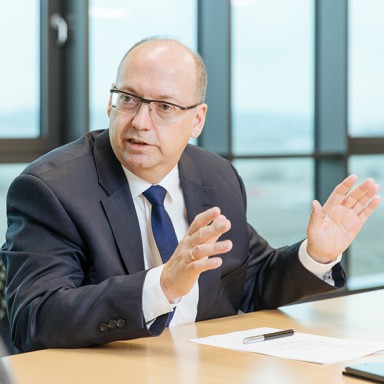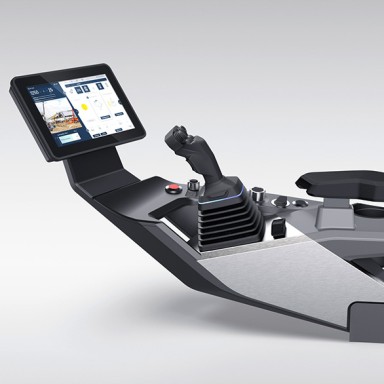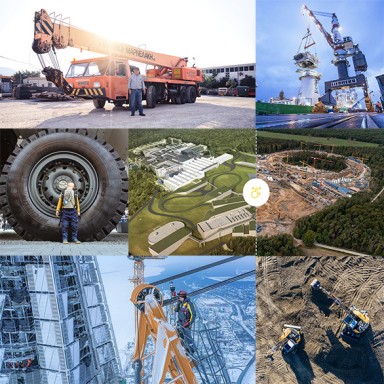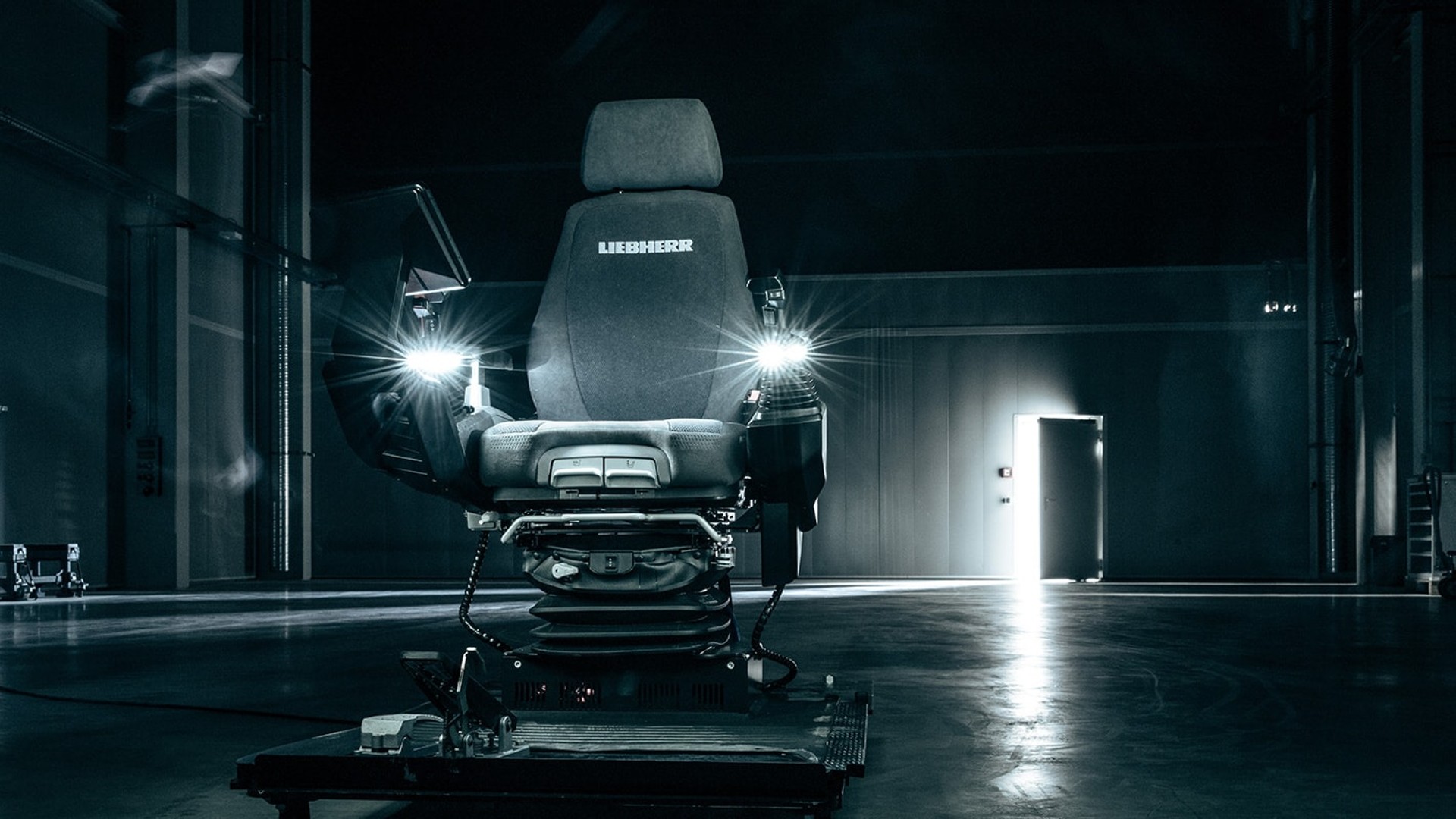
6 minutes reading time
Come join the Revolution!
“Making the complex simple” is the mantra guiding the work of the researchers and developers from Liebherr and the scientists from the Technical University (TU) of Dresden. And this ethos has produced INTUSI, a new piece of control technology that combines an intelligent user interface with sophisticated machine intelligence. It marks a revolution in machine communication for construction and earthmoving machines.
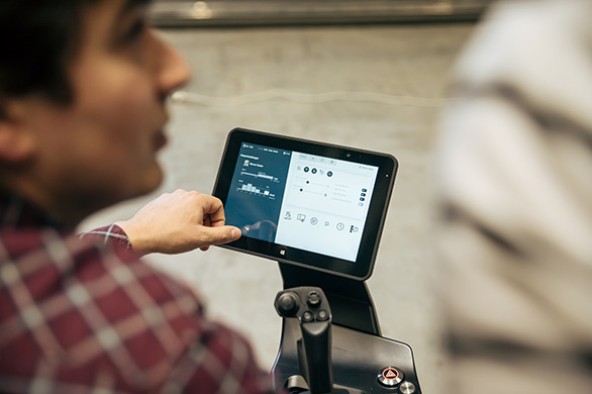
The construction machine of the future
There’s something a little Matrix-like about the room when Florian Mang unbolts the hall and a narrow strip of light pierces the darkness. At the back of the room, the light falls on a control panel with an anthracite-coloured driver’s seat and control levers covered with rings of LEDs. Is it sci-fi? Florian dismisses that idea with a wave of the hand. “Then again, perhaps it is,” he adds. “This is the construction machine of the future.”
Florian is a development engineer at Liebherr-Hyrdaulikbagger GmbH in Kirchdorf an der Iller. Here, in Hall 18 at the development and exhibition centre of the excavator and earthmoving manufacturer, the final preparations are being made to unveil a prototype with the potential to usher in a technological revolution – the innovative, adaptive INTUSI concept. Liebherr is giving this intuitive user interface its worldwide première at this year's BAUMA trade fair. This technology stands to completely revolutionise communication with construction machines and inter-machine communication.
It’s only a few weeks until the trade fair kicks off in Munich which is why today a group of scientists has again travelled in with Jens Krzywinski, Professor for Technical Design at the TU Dresden. “We’re putting the finishing touches on our prototype,” explains Florian. They obviously know each other well, judging by the warm way they greet each other. Werner Seifried, Director of Technology at Liebherr-Hydraulikbagger GmbH, looks happy to see the young scientists. For two years, he and his team have been working closely together with the chairs and faculties at the TU Dresden to realise INTUSI’s ambitious aims. As well as the technical design faculty, the endowed chair for construction machines and the Gesellschaft für Technische Visualistik, a data visualisation company spun out of the computer science faculty, have also been involved in the interdisciplinary project.
“The goal of the new technology was to create a future-orientated interface for machine operators that would be just as easy to use and well-organised as Liebherr’s existing products,” Werner explains the purpose behind the research. And as if this wasn’t enough of a challenge, the idea was that the new technology would function across all Liebherr’s earthmoving and material handling machines in the future.

Change is inevitable
“The project is being driven by digitisation and the increasing importance of the internet of things,” says Werner. “Change will inevitably come to the construction site. Thanks to the INTUSI project, we will be well prepared for it and the challenges it entails,” says Werner, well aware that it’s completely uncharted waters for the construction site. “At the moment, paperwork is usually dealt with on site in quite a chaotic way. There’s not much in the way of digital networking. Quite the contrary is true; a lot is still done on an ad hoc basis so that it’s possible to react to constantly changing circumstances on the ground, such as when the subsoil turns out to be different than initially assumed."
A construction site, explains Werner, is one of the most challenging environments for man and machine. “That’s why it’s such an interesting and pioneering venture to create digital control systems that can make a difference.” INTUSI is a trailblazer in this respect.
“In our research projects with Liebherr, we have analysed and reimagined communications between man and machines, and inter-machine communication,” explains Professor Krzywinski. To achieve this, Liebherr engineers from Kirchdorf have developed a huge range of ideas and concepts alongside software specialists, system architects, media designers, UX specialists and industrial designers.
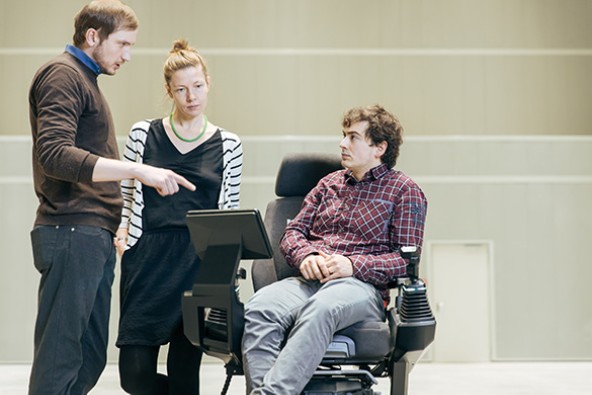
Cooperation between industry and science
“We intentionally didn’t bring in any professional users for the initial brainstorming phase. They only came later,” Florian Mang stresses. It was important not to let the objection, “But we’ve never done anything like this before,” get in the way of a genuinely free and innovative process. Werner Seifried believes that out-of-the-box thinking is key when it comes to creating real innovation. “The young digital natives at Dresden University should be able to think up, down, sideways and back to front. Nothing is off limits,” explains Werner. “In our project, disruption wasn’t just allowed, we actively encouraged it in our researchers and developers.”
And the result is INTUSI. The interface creates a completely new interface between the digital and analogue world. “The fact that different types of machine need different user interfaces should now be a thing of the past,” says Florian Mang. “INTUSI works everywhere, using the same patterns and principles.”
The developers have created an intuitive system for machine operators that collates all the necessary information for the tasks at hand to make day-to-day work that bit simpler and easier. “The smaller machines like wheel loaders, excavators and bulldozers often have a variety of different tasks to perform during the day,” says Florian, highlighting the scale of the challenge. He explains how in the past there has been a proliferation of assistance systems bringing more and more operating systems and displays into the cabin area. “At some point, nobody will be able to tell what’s what,” he explains. With INTUSI, Liebherr have come up with a modular solution that allows any number of additional functions or tools for a range of different mobile or load-bearing applications to be added to the interface. “It’s a real one-size-fits-all kind of machine,” says Florian in summary.
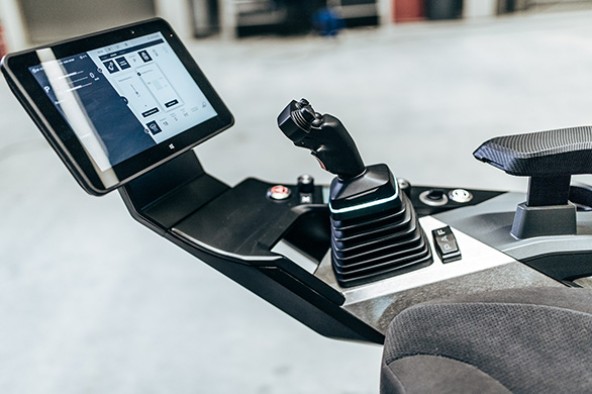
Premiere at Bauma
He mentions another benefit that should be music to the ears of cost-conscious machine operators: “INTUSI allows you to stay up to date at all times without investing in additional hardware. The machine can be constantly upgraded simply by updating the software,” Werner adds. “Even new assistance systems that become available to the market in a few years can be integrated into the new interface.”
No doubt they will be bringing a bit of that science fiction factor from Hall 18 with them to Bauma. “It’s going to be really exciting at our ‘Innovation, Share & Explore’ space,” enthuses Florian. “We will record and evaluate our clients' first impressions and thoughts which will directly inform our product specifications. First, we will create a range of models. Then the revolution can begin."

